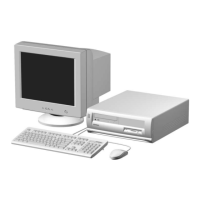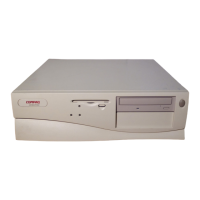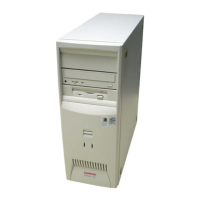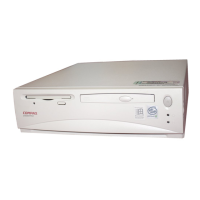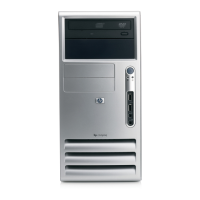Chapter 5 Input/Output Interfaces
Compaq Deskpro 4000 and 6000 Personal Computers
featuring the Pentium II Processor
First Edition – October 1997
5-14
5.4 SERIAL INTERFACES
The serial interfaces transmit and receive asynchronous serial data with external devices. The
serial interface function is provided by the 87307 I/O controller component, which integrates two
16550/16450-compatible UARTs. One UART(1) is dedicated to support a DB-9 connector on the
rear of the chassis while the second UART(2) can be configured to support either the second DB-
9 connector or the 8-pin DIN-type connector for the infrared interface. The UART2 cannot
support both RS-232 and IrDA interfaces simultaneously but can be dynamically switched
between interfaces by software.
Figure 5–3.
Serial Interfaces Block Diagram
5.4.1 RS-232 INTERFACE
The DB-9 connector-based interface complies with EIA standard RS-232-C, which includes
modem control signals and supports baud rates up to 115.2 Kbps. The DB-9 connector is shown
in the following figure and the pinout of the connector is listed in Table 5-9.
Figure 5–4.
Serial Interface Connector (Male DB-9 as viewed from rear of chassis)
Table 5–9.
DB-9 Serial Connector Pinout
Table 5-9.
DB-9 Serial Connector Pinout
Pin Signal Description Pin Signal Description
1 CD Carrier Detect 6 DSR Data Set Ready
2 RX Data Receive Data 7 RTS Request To Send
3 TX Data Transmit Data 8 CTS Clear To Send
4 DTR Data Terminal Ready 9 RI Ring Indicator
5 GND Ground -- -- --
Each DB-9 port is independently configurable as to it’s COMn (address) designation.
UART1
(Log. Dev. 6)
UART2
(Log. Dev. 5)
DB-9 A (RS-232)
DB-9 B (RS-232)
DIN (IrDA)
TX/RX/CNTRL
TX/RX/CNTRL
TX/RX
TX
RX
IrDA Dongle
87307
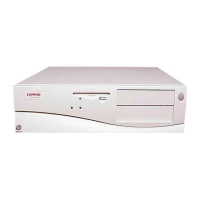
